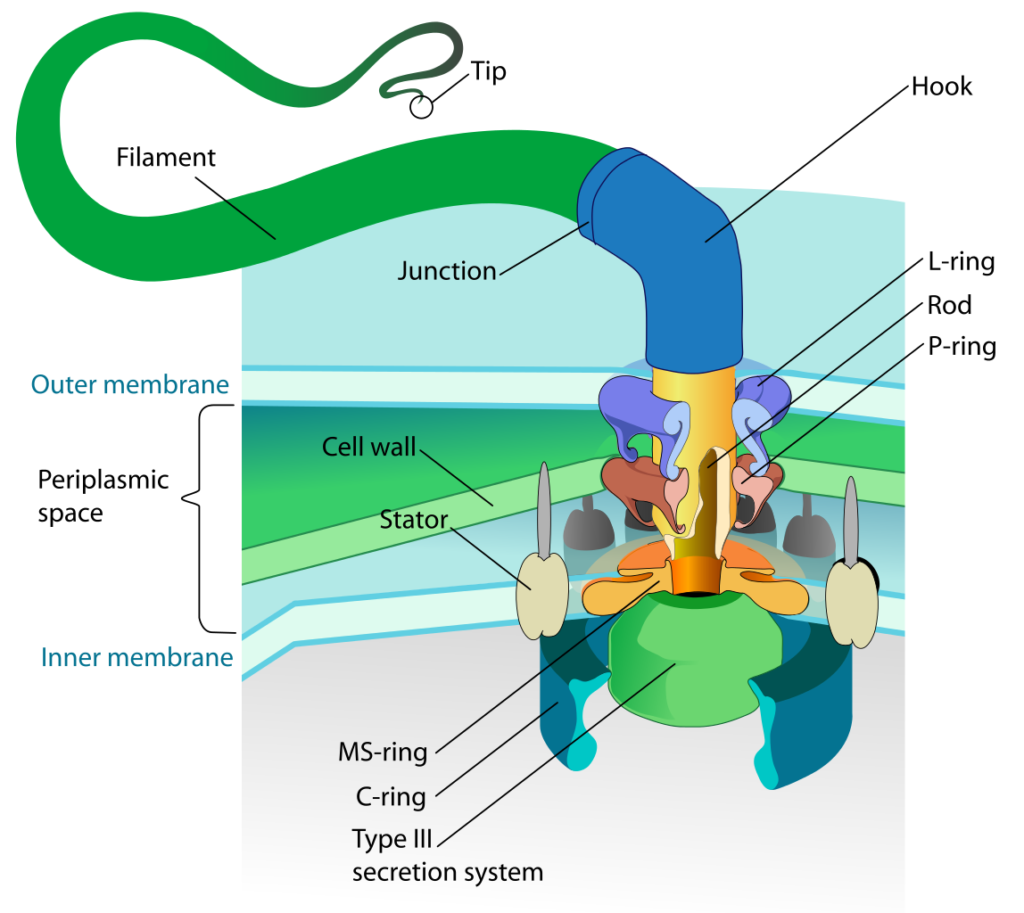26) Bacteria’s external structures enable movement and attachment – justify your answer.
26) Bacteria’s external structures enable movement and attachment – justify your answer.
answers
Structures Outside the Cell Wall
Bacteria can also have structures outside of the cell wall, often bound
to the cell wall and/or cell membrane. The building blocks for these structures
are typically made within the cell and then secreted past the cell membrane and
cell wall, to be assembled on the outside of the cell.
Fimbriae (sing. fimbria)
Fimbriae are thin
filamentous appendages that extend from the cell, often in the tens or
hundreds. They are composed of pilin proteins and are used by
the cell to attach to surfaces. They can be particularly important for
pathogenic bacteria, which use them to attach to host tissues.
Pili (sing. pilin)
Pili are very
similar to fimbriae (some textbooks use the terms interchangeably) in that they
are thin filamentous appendages that extend from the cell and are made of pilin
proteins. Pili can be used for attachment as well, to both surfaces and host
cells, such as the Neisseria gonorrhea cells that use their
pili to grab onto sperm cells, for passage to the next human host. So, why
would some researchers bother differentiating between fimbriae and pili?
Pili are typically longer than
fimbriae, with only 1-2 present on each cell, but that hardly seems enough to
set the two structures apart. It really boils down to the fact that a few
specific pili participate in functions beyond attachment. The conjugative
pili participate in the process known as conjugation,
which allows for the transfer of a small piece of DNA from a donor cell to a
recipient cell. The type IV pili play a role in an unusual
type of motility known as twitching motility, where a pilus
attaches to a solid surface and then contracts, pulling the bacterium forward
in a jerky motion.
Flagella (sing. flagellum)
Bacterial motility is typically
provided by structures known as flagella. The bacterial flagellum
differs in composition, structure, and function from the eukaryotic flagellum,
which operates as a flexible whip-like tail utilizing microtubules. The
bacterial flagellum is rigid in nature and operates more like the propeller on
a boat.
There are three main components to the
bacterial flagellum:
- the filament – a long thin
appendage that extends from the cell surface. The filament is composed of
the protein flagellin and is hollow. Flagellin proteins
are transcribed in the cell cytoplasm and then transported across the cell
membrane and cell wall. A bacterial flagellar filament grows from its tip
(unlike the hair on your head), adding more and more flagellin units to
extend the length until the correct size is reached. The flagellin units
are guided into place by a protein cap.
- the hook – this is a curved
coupler that attaches the filament to the flagellar motor.
- the motor – a rotary motor that spans both the cell membrane and the cell wall, with additional components for the gram negative outer membrane. The motor has two components: the basal body, which provides the rotation, and the stator, which provides the torque necessary for rotation to occur. The basal body consists of a central shaft surrounded by protein rings, two in the gram positive bacteria and four in the gram negative bacteria. The stator consists of Mot proteins that surround the ring(s) embedded within the cell membran

Comments
Post a Comment